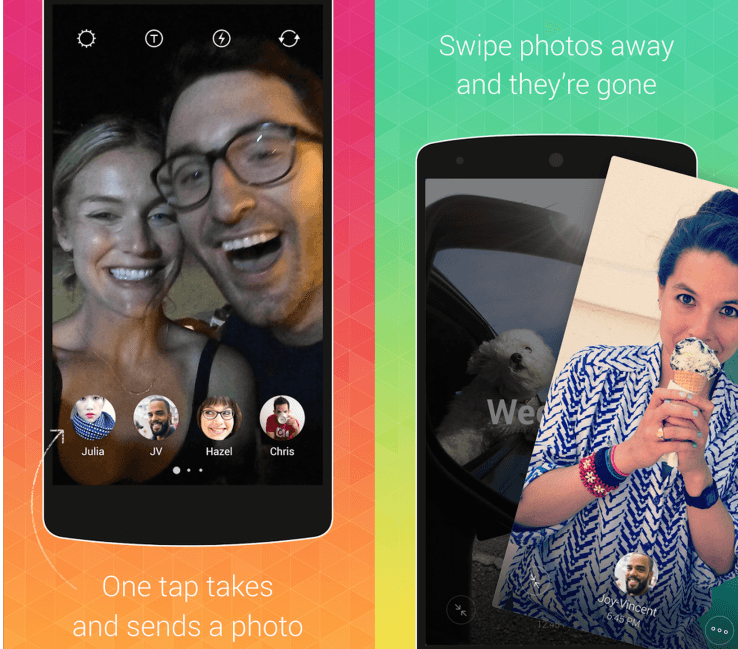Instagram has launched ‘Bolt’, a new SnapChat-style app which focuses on speedy personal exchanges.
The app, which is so far only available on iOS and Android in select regions, does away with social media integration and instead posts images straight to contacts in your address book. On top of this, only one recipient can be selected at a time.
To replace the camera shutter button, icons of your friends’ faces are arranged in a row at the bottom of the screen. Tapping these icons will take a still image, and holding down will record video. The unedited image is then immediately sent to that recipient. The icons can be swapped out for other friends’ icons in preparation for quick messaging. This emphasis on speed, and the lack of Facebook or Twitter contacts, means it’s ideal for use within close social circles.
Sending ‘bolts’ takes no time at all, and so does sorting through them when you receive them. Swiping away from a photo or video will instantly remove it from your inbox.
Shake-to-undo
Luckily, there’s a shake-to-undo feature, which means that if you shake the device soon after the photo has been sent, you can retrieve it, which should help with any surprise photo-bombs.
The drawback lies in its privacy. There is a block function, but as of yet no report system. This means you may get some unwanted messages from time to time, but at least you won’t be getting those generic selfies sent to all the sender’s contacts.
In a highly competitive market, it’s going to be interesting to see whether or not Instagram can lure and retain an active user-base when there are already a lot of apps that do similar things.
Strangely, the app shares a name with a US company named Bolt, which makes an app that provides free voice calls. A number of users have reportedly downloaded that app, thinking it was the new Instagram image-sharing app. They are currently trying to convince Instagram to change the name of the app before it releases in more territories.
At the moment, the app can only be used in New Zealand, Singapore and South Africa, but that list is set to expand in the near future. Until then, for the rest of us, it’s a waiting game.

